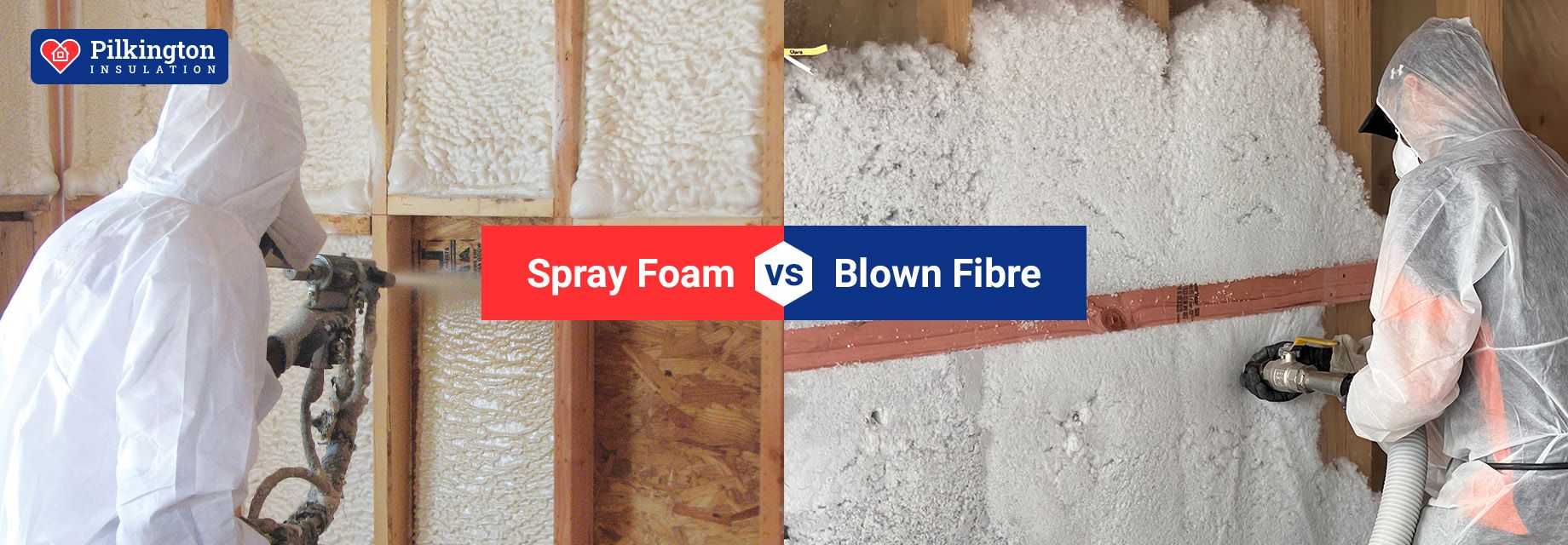
Spray Foam Insulation vs Blown Loosefill Insulation – What’s the difference and what should you choose?
We’ve been installing insulation in NZ homes for a long time. Over the years we have seen many insulation products come and go but there seems to still be a lot of confusion around the differences between spray foam insulation and blown insulation. In this article, we try to unpack the differences and which insulation products we recommend for your home.
Installation of spray foam insulation
Spray Foam Insulation was widely used to insulate homes throughout the 80s and 90s. It is made of polyurethane foam which expands to fill cracks and voids. One of the advantages of foam insulation is that it helps plug any air gaps in the home creating a tightly sealed thermal envelope.
An installer uses a spray gun to apply insulation. As the spray makes contact with the surface or cavity it expands and hardens. Correctly installed foam insulation provides good thermal performance however is tricky and dangerous to install.
Disadvantages of Spray Foam Insulation
Some of the disadvantages of using spray foam insulation are that installation requires you to remove the internal linings. As such, it is usually only seriously considered when a house is undergoing a renovation.
Furthermore, the installation process is very tricky. The foam starts as a wet spray and if not installed correctly it can potentially cause damage to your home and even pull away from the framing over time
Additionally, the foam can contain toxic chemicals and exposure can cause severe respiratory and skin issues. As such very few insulation companies still provide spray foam insulation, instead opting for safer and better performing loose-fill blown insulation.
Blown Loose-fill Insulation – A better alternative to spray foam insulation
This type of insulation has become a lot more common in recent years due to its ease of installation and high thermal performance.
Blown Insulation is a dry fibre loose fill insulation. Installers can blow this fill into the walls without removing the linings. Installed correctly, the insulation fills the gaps and voids in your home and creating a sealed thermal barrier. This is a major advantage over traditional insulation products like batts and segments.
The product is completely safe to install and doesn’t pose any risks to the home. Likewise, blown loose-fill insulation is much safer and doesn’t contain any chemicals or harmful substances.
An installer drills small holes in the cladding and then blows the loose-fill insulation into the cavity.
In conclusion, it’s much safer and simpler to choose a blown insulation product.
The choice between spray foam insulation and blown insulation is an easy one to make. While 20 years ago foam seemed like a good idea, the development of blown insulation products like CosyWall Insulation has proved blown insulation is a much better option. Blown loose-fill insulation has less installation risks and provides better thermal performance. This is what we would recommend as the best type of insulation for most New Zealand homes.
To learn more or to book a free home insulation assessment please contact us today.
